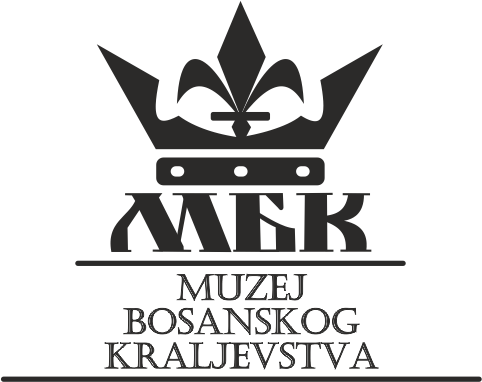Ivaniš Dragišić (before August 12, 1434 – before August 22, 1446) is the son of Prince Dragiša Vukčić and grandson of Duke Vukac Hrvatinić. We are talking about the Hrvatinić, who did not leave a deep mark in the last decades of Bosnian independence, therefore, it is safe to say that his political engagement remained in the shadow of his cousin Duke Juraj Vojsalić. In historical sources, Duke Ivaniš Dragišić appears only once, in the charter issued by Juraj Vojsalić on August 12, 1434 in Potkreševo, where he is mentioned with the title of duke as a witness from the Hrvatinić kindred (“od svojti”). The aforementioned charter was issued in a very dynamic period of the Bosnian Middle Ages, which was marked by great internal discord and anarchy. Namely, the opponents of King Tvrtko II Tvrtković, Sandalj Hranić Kosača and Radoslav Pavlović, brought to Bosnia in 1433 the counter-king Radivoj, the son of King Ostoja. Consequently, the legitimate king Tvrtko II had to depart Bosnia and travel to Hungary to ask for help there from King Sigismund, in response to the pressure exerted by the Ottoman troops that arrived with the counter-king Radivoj, who was otherwise the sultan’s choice. This was followed by an intense reaction from the Hungarian side, in 1434 Matko Talovac was sent to Bosnia to drive out the Ottoman detachments from the conquered territories and restore King Sigismund’s protégé to the throne. This campaign achieved some results, with certain territories being freed from Ottoman rule, however it did not strengthen the position of Tvrtko II, who retreated together with the Hungarian army. However, even the counter-king Radivoj failed to obtain the Bosnian crown for himself.
In the meantime, there was a clash between Kosača and Hrvatinić families who apparently supported opposite sides. Sandalj Hranić gave support and protection to Radivoj Ostojić while Juraj Vojsalić sided with the legitimate king Tvrtko II. In this confrontation between the Bosnian feudal nobles, which took place in 1434, Juraj Vojsalić won and took part of western Hum from Sandalj. At the same time, he freed the nobles Radivojević, who had previously been subject to Sandalj Hranić, and with the above-mentioned charter, issued to the Đurđević brothers – Duke Pavlo, Prince Nikola and Prince Vlatko, and their cousin Prince Vuk Vukićević, he confirmed their possessions, the towns of Vratar, Novi and Kruševa, and the villages of Dragljan, Kozice, Hrašćane, Vrhdo, Zahođane, Zahode, Živogošće, Tučevi, Kotišina, Makar, Bast and Vinica. The fact that it was Ivaniš Dragišić who was mentioned in the charter from Hrvatinić family indicates his good relations with Duke Juraj Vojsalić. Following this, the charter was handed over to the Franciscans, who had the right to render a verdict in the event of a dispute. Given that the charter mentions members of the Franciscan order, the Catholic orientation of both Juraj Vojsalić and Ivaniš Dragišić is undeniable.
The previous actions of Duke Ivaniš Dragišić, as well as those after this charter was issued, are shrouded in darkness as far as sources are concerned, and his marital ties are also a complete unknown. The only reliable thing is that he had three sons, the Dragišić brothers – Pavle, Marko and Juraj, who bore the title of prince. Thanks to the charter issued by King Stjepan Tomašević on August 22, 1446, to the Dragišić brothers, the possessions of their father Ivaniš Dragišić can be reliably determined. Namely, with this charter, King Tomaš only confirmed the possessions of his sons, which means that these are the territories that Ivaniš previously held in his hands and which were confirmed as inheritance to his descendants. These include the towns of Ključ, Glaž and Mrin and 60 villages in the counties of Banica, Sana, Glaž and Uskoplje. In addition, in the charter, Ivaniš Dragišić is marked as deceased, so it can be assumed that he died some time before its issuance.
Bibliography:
- Ćirković, Sima: Istorija srednjovekovne bosanske države, SKZ, Beograd, 1964, 266.
- Ćorović, Vladimir: Historija Bosne, I, SKA (Posebna izdanja 129, Društveni i istoriski spisi 58), Beograd, 1940, 277.
- Dedić, Enes: “Sanica u srednjem vijeku”, Godišnjak BZK Preporod 14, Sarajevo, 2014, 358-359.
- Lovrenović, Dubravko: Na klizištu povijesti (sveta kruna ugarska i sveta kruna bosanska) 1387-1463, Synopsis, Zagreb-Sarajevo, 2006, 298.
- Miklosich, Franz: Monumenta serbica historiam Serbiae Bosnae Ragusii, Apud Guilelmum Braumüller, Wiennae, 1858, 377-379.
- Mrgić-Radojčić, Jelena: Donji Kraji. Krajina srednjovekovne Bosne, Filozofski fakultet u Beogradu-Filozofski fakultet u Banjaluci-Istorijski institut u Banjaluci, Beograd-Banja Luka, 2002, 116, 120.
- Perojević, Marko: “Stjepan Tvrtko II Tvrtković (opet)” in: Poviest hrvatskih zemalja Bosne i Hercegovine, HKD Napredak, Sarajevo, 1942, 488-489.
- Rudić, Srđan: “Povelja kralja Stefana Tomaša sinovima Ivaniša Dragišića”, Građa o prošlosti Bosne 12, ANURS, Banja Luka, 2019, 81, 87-89.
- Smiljanić, Aranđel: “Povelja vojvode Đurđa Voisalića kojom potvrđuje baštinske posjede braći Đurđevićima”, Građa o prošlosti Bosne 4, ANURS, Banja Luka, 2011, 117, 122-124, 128.
- Živković, Pavao: Tvrtko II Tvrtković: Bosna u prvoj polovini XV stoljeća, Institut za istoriju, Sarajevo, 1981, 171, 173.
